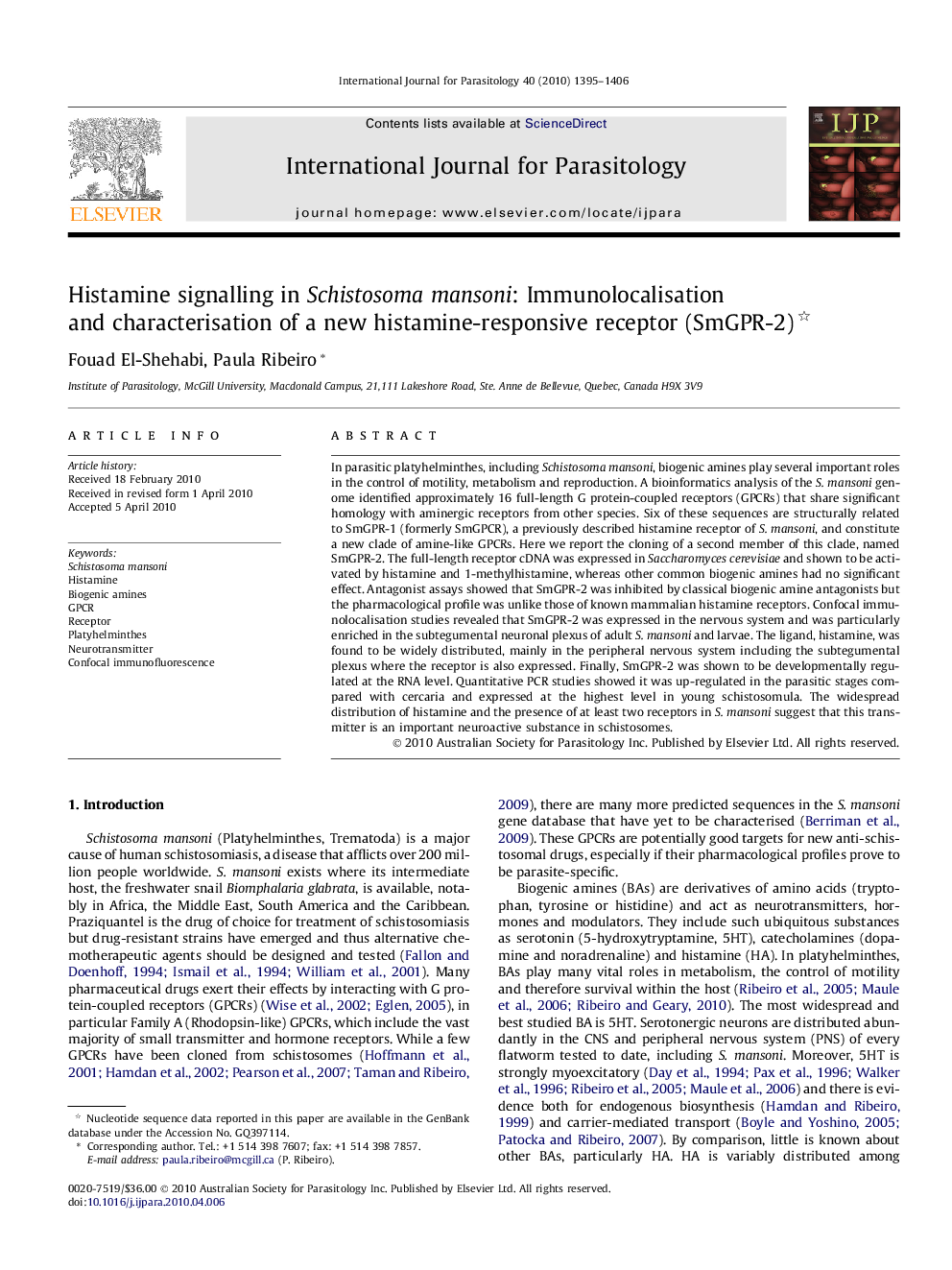| کد مقاله | کد نشریه | سال انتشار | مقاله انگلیسی | نسخه تمام متن |
|---|---|---|---|---|
| 2436354 | 1107302 | 2010 | 12 صفحه PDF | دانلود رایگان |

In parasitic platyhelminthes, including Schistosoma mansoni, biogenic amines play several important roles in the control of motility, metabolism and reproduction. A bioinformatics analysis of the S. mansoni genome identified approximately 16 full-length G protein-coupled receptors (GPCRs) that share significant homology with aminergic receptors from other species. Six of these sequences are structurally related to SmGPR-1 (formerly SmGPCR), a previously described histamine receptor of S. mansoni, and constitute a new clade of amine-like GPCRs. Here we report the cloning of a second member of this clade, named SmGPR-2. The full-length receptor cDNA was expressed in Saccharomyces cerevisiae and shown to be activated by histamine and 1-methylhistamine, whereas other common biogenic amines had no significant effect. Antagonist assays showed that SmGPR-2 was inhibited by classical biogenic amine antagonists but the pharmacological profile was unlike those of known mammalian histamine receptors. Confocal immunolocalisation studies revealed that SmGPR-2 was expressed in the nervous system and was particularly enriched in the subtegumental neuronal plexus of adult S. mansoni and larvae. The ligand, histamine, was found to be widely distributed, mainly in the peripheral nervous system including the subtegumental plexus where the receptor is also expressed. Finally, SmGPR-2 was shown to be developmentally regulated at the RNA level. Quantitative PCR studies showed it was up-regulated in the parasitic stages compared with cercaria and expressed at the highest level in young schistosomula. The widespread distribution of histamine and the presence of at least two receptors in S. mansoni suggest that this transmitter is an important neuroactive substance in schistosomes.
Figure optionsDownload high-quality image (176 K)Download as PowerPoint slide
Journal: International Journal for Parasitology - Volume 40, Issue 12, October 2010, Pages 1395–1406